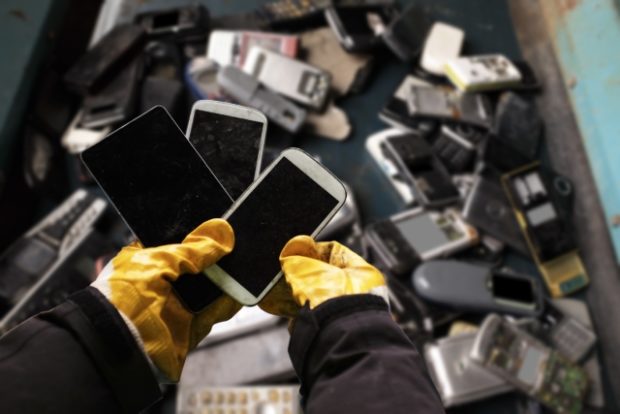
In 2019, 53.6 million metric tons of e-waste was generated around the world. Image: IStock/baranozdemir
Europeans produced an average of 16.2 kilograms of e-waste per capita (discarded electronic and electrical equipment) in 2019, according to the Global E-waste Monitor 2020 published last July by the Global E-waste Statistics Partnership in collaboration with the United Nations University. This is the equivalent of close to eight portable computers per person.
Meanwhile, those in Oceania produced 16.1 kg of e-waste per person, whereas those in the Americas produce 13.3 kg per person. On the level of the planet, a record 53.6 million tons of e-waste was generated in 2019. In spite of a host of interesting initiatives to generate value from it, like using bacteria to bind with precious metals it contains, most e-waste is either incinerated or sent to landfill and only 17.4% is recycled.
Every year, the volume of telephones, televisions and computers in the world increases by 2.5 million metric tons. All of these objects, which have a relatively short life of being used, will ultimately be added to a growing mountain of waste.
According to a recent report by the United Nations University, 53.6 million tons of e-waste were generated around the globe in 2019. This amounts to 7.1 kilograms per capita for each member of the global population, with much higher figures for Europe, Oceania and the Americas.
The overall amount of e-waste is expected to double by 2030. Four-fifths of e-waste had not been recycled despite its potential value and this amounts to a dual tragedy because unprocessed e-waste is a major environmental hazard which could in many instances provide a significant source of revenue.
Tons of dangerous substances released into the environment
Only 17.4% of e-waste was collected and recycled in 2019. According to the United Nations University report, Europe is a good student in this regard, recycling 42.5% of its e-waste, which is either processed in its country of origin or sold to markets in the developing world.
But what exactly happens to the 82.6% of e-waste that is not recycled?
Most discarded electronic and electrical equipment ends up in vast scrap yards, which are little more than open-air dumps with no protection other than a surrounding perimeter fence. There is a largely undocumented flow of toxic substances into the environment from these dumps. In 2019, these toxic substances included an estimated 50 tons of mercury and 98 million tons of carbon dioxide (CO2) equivalents from discarded refrigerators and air conditioners.
48 billion euros thrown away
From an economic point of view, failure to address the problem of e-waste results in the loss of billions of euros.
The intrinsic value of gold, silver, copper, platinum and other high-value, recoverable materials in global e-waste was estimated to be worth 48 billion euros (or approx. P2.7 trillion) in 2019 — an amount higher than the GDP of many countries around the globe.
In the current period of crisis, better management of the world’s e-waste would not only result in major benefits for the environment, but also in significant economic savings. CC
RELATED STORIES:
E-waste levels surge 20% in 5 years, says UN
Steps to shrink mountain of e-waste via better recycling